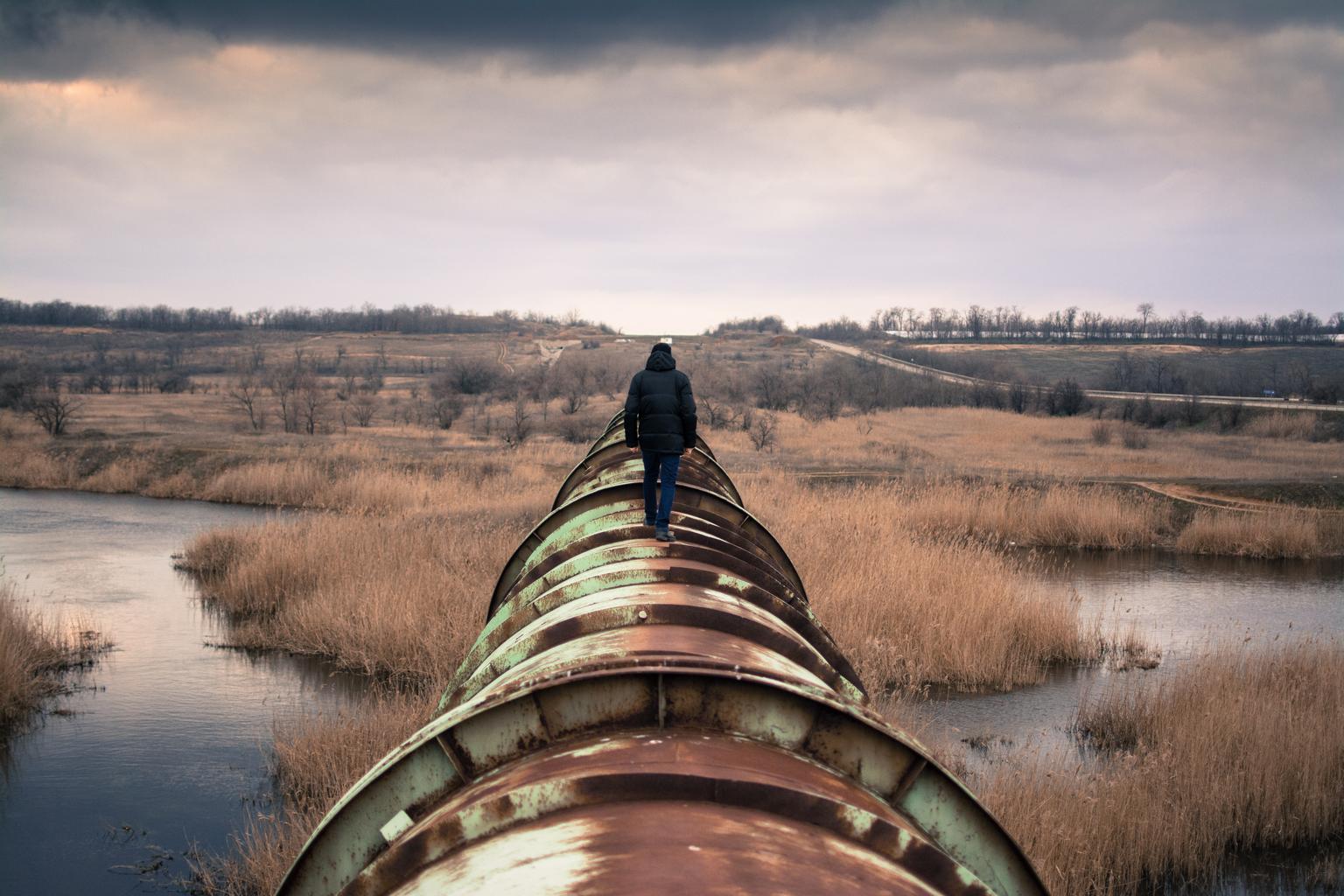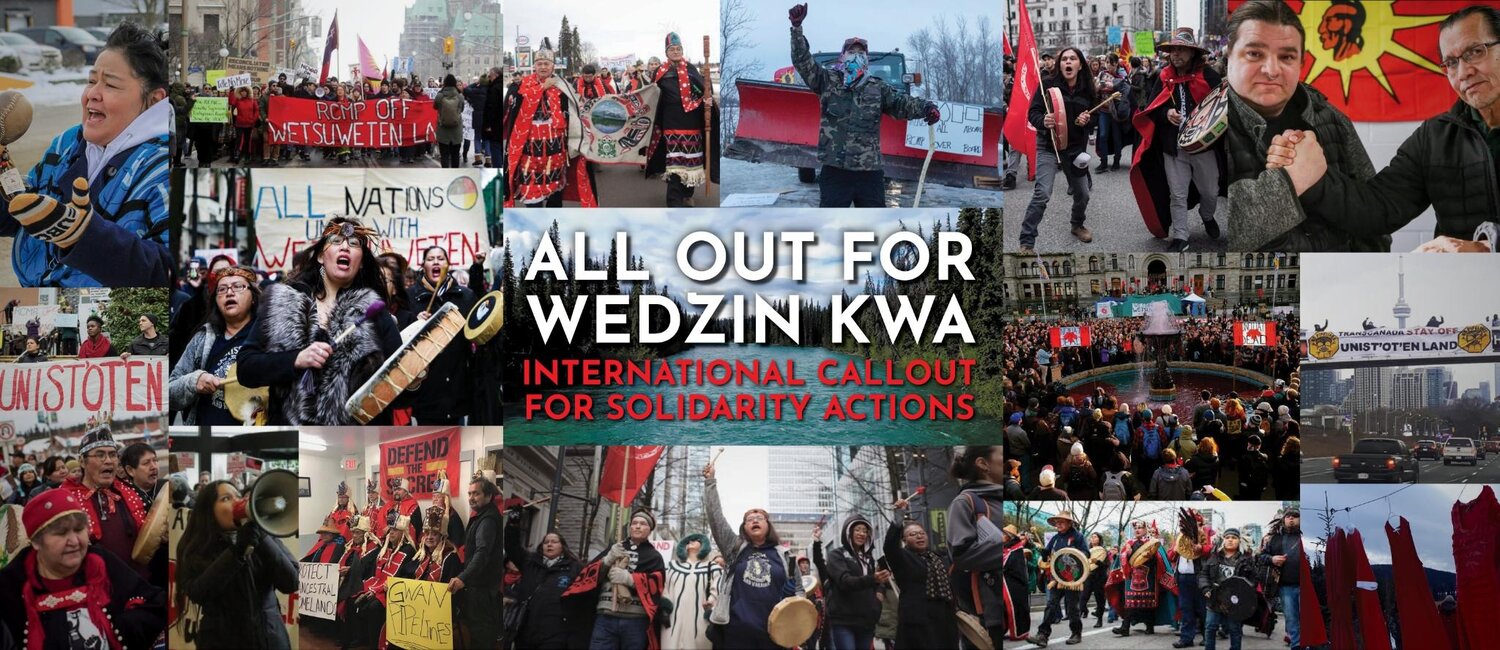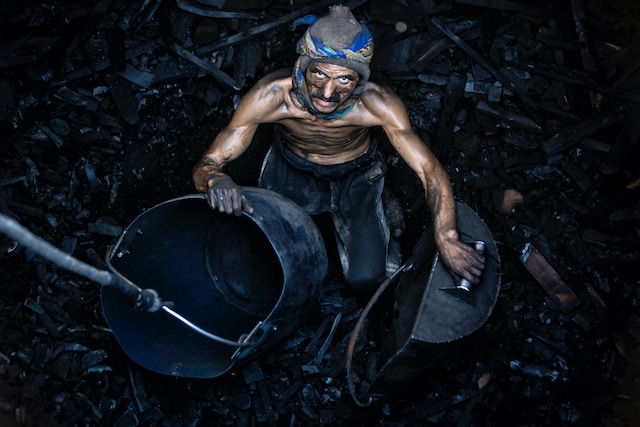
by DGR News Service | Oct 15, 2021 | Biodiversity & Habitat Destruction, Direct Action, Indigenous Autonomy, Mining & Drilling, Property & Material Destruction, Repression at Home, Toxification
This article originally appeared in Common Dreams.
By JULIA CONLEY
“Not a single drop of oil is going to come out of the Amazon until the government takes care of us,” said campaigners.
Demanding stronger social and environmental support in northern Peru’s Loreto region, about 200 Indigenous protesters on Wednesday announced a strike two days after they began occupying a station of the North Peruvian Oil Pipeline controlled by state-owned oil company Petroperu.
The strike will continue until President Pedro Castillo, who took office in July and has pledged a redistribution of wealth from mining projects to help local communities, fulfills the Indigenous people’s demands, said the Indigenous Association for Development and Conservation of Bajo Yurimaguas (AIDCBY).
“Not a single drop of oil is going to come out of the Amazon until the government takes care of us,” said AIDCBY.
The group, as well as the Awajun Native Federation of the Apaga River (FENARA) and the Peoples Affected by Oil Activity (PAAP), are demanding the establishment of a trust fund to finance the cleanup of areas affected by oil spills as well as education and healthcare services in the region.
Official statistics show that at least 37 spills from the pipeline were recorded between 1996 and 2016.
According to the environmental protection group EarthRights International, local communities have been affected by major declines in crop yields and contaminated drinking water and have reported “a number of health problems stemming from the contamination, including nausea, migraines, vomiting, stomach pain, skin rashes, and even miscarriages among pregnant women; tests have confirmed contaminants in blood and urine.”
The demonstrators called on Castillo and Energy Minister Ivan Merino to travel to Station 5, the pipeline station the groups have taken over. According to Telesur English, FENARA on Wednesday said the government should not “provoke with a police deployment” but instead allow for “the implementation of an intercultural dialogue.”
Last year, three Amazonian Indigenous people were killed and 17 demonstrators were injured after Peruvian security forces responded to protests over a pipeline run by Canadian firm PetroTal.
Petroperu’s pipeline transports crude oil from northern Peru’s Amazon regions to a refinery on the country’s Pacific coast. The company was forced to halt the pumping of oil this week as the groups took over Station 5.
Ismael Pérez Petsa, a leader of the Lower Puinahua Indigenous Development and Conservation Association, told Radio La Voz de la Selva Wednesday that the outcome of the protest is now in the Castillo administration’s hands.
“Now we’ll see the real face of the executive who campaigned about supporting Indigenous peoples,” Pérez Petsa said. “The ball is with them and today it’s [a] government political decision.”
Photo by Dimitry Anikin on Unsplash

by DGR News Service | Oct 14, 2021 | Climate Change, Colonialism & Conquest, Indigenous Autonomy, Obstruction & Occupation, Protests & Symbolic Acts, Repression at Home
This article originally appeared in YES! Magazine.
BY ALEC CONNON & ERIKA LUNDAHL
Shanai Matteson, a 39-year-old White settler, sat in the stuffy overflow room watching the packed Public Utility Commission meeting, along with more than a hundred others, in St. Paul, Minnesota, in June 2018. Over several hours, she listened as dozens of people—Native elders, local landowners, and young people concerned about their futures—testified against the Line 3 tar sands pipeline, urging the commission to deny the project a key permit. She listened, too, as Enbridge workers, bused in by the company, voiced their support for the pipeline.
Matteson remembers the collective dismay and anger in the room as the five-person board approved Enbridge’s permit request. She also remembers what happened next: Tania Aubid, a member of the Mille Lacs Band of Ojibwe, stood up and told the commissioners that they had just declared war on the Ojibwe people.
Outside of the conference hall, organizers held a rally. Matteson listened as Winona LaDuke, a member of the White Earth Nation and executive director of the nonprofit Honor the Earth, spoke alongside several youth interveners—teenagers who were suing to stop the pipeline in court. Listening to their words, Matteson was moved by their unwavering dedication―to the land, water, and climate, but also to upholding the treaty agreements, which were being violated by this pipeline project.
After the news conference, Matteson packed her two young children into the car. They drove for nearly three hours before reaching a part of the land where the Mississippi starts to widen into one of the nation’s most storied rivers. It was a place she knew well. Matteson’s family had lived in the area for five generations, ever since her great-great-grandfather, Amasa, settled a homestead and opened a small sawmill on 1855 Treaty land. She’d grown up in the nearby town of Palisade, Minnesota, population 150.
Here was where Enbridge planned to drill the Line 3 pipeline under the Mississippi.
Standing on the riverbank that night, Matteson made a pledge to do everything she could to uphold the treaties and to stop Line 3. “I remember that day, saying to myself ‘I am making a commitment to this fight,’ ” Matteson recalls.
Defending Treaty Rights: From the Salish Sea to Line 3
On July 25, a Lummi Nation-carved totem pole will pass through the Mississippi Headwaters, under which Enbridge plans to drill the Line 3 pipeline. It’s part of a 1,500-mile journey from the Salish Sea in the Pacific Northwest through numerous Indigenous sacred sites, including Bears Ears in the Southwest and Standing Rock in the Midwest, en route to Washington, D.C. The totem pole is intended to invite Native and non-Native people to connect with the idea of broken treaties and the ongoing efforts to honor them, especially when treaty rights come into conflict with extractive capitalism.
Putting a hand on the totem pole, as people are invited to do at each sacred site event stop, one can’t help but feel a sense of awe for the many stories, hopes, and prayers it carries—and to offer their own. The 24-foot pole, hauled on a trailer behind a pickup, bears images that tell stories of the present-day struggles faced by Indigenous communities—including the epidemic of missing and murdered Indigenous women, the crisis of children held in cages at the U.S.-Mexico border, and the work of language revitalization. One carving is a grandmother with seven tears, using culture to teach her granddaughter how to turn trauma into wisdom. The totem pole aims to serve as “a reminder of the promises that were made to the first peoples of this land and waters,” Lummi master carver Jewell James told The Washington Post.
These promises were made in the form of nation-to-nation treaty agreements, recognized in the U.S. Constitution as “the supreme law of the land.” For non-Native individuals residing in the U.S., treaty rights are still the legal mechanism giving people the right to live on ceded tribal land. Put another way, if settlers (like the two of us writing this piece) are not actively holding up their end of the deal, then they forfeit the right to be here.
In exchange, the U.S. government promised tribes services, such as health care, education, and housing—and in many cases, treaties reserved the right for Native people to hunt and fish within their traditional territory. Instead, the reality has been a history of genocidal massacres, forced displacement, brutal residential schools, the outlawing of language, religion, and culture, and broken treaty obligations. Only by confronting the context of the U.S.’s settler-colonial history can settlers begin to reckon with their personal identity as treaty people.
“Part of what’s so wonderful about the pole is how it invites people to learn about the treaty, and to learn about the true history of this country,” says Lummi tribal fisher and treaty advocate Ellie Kinley, co-founder of Sacred Sea, a Indigenous-led nonprofit whose mission is to defend Lummi sovereignty and treaty rights and promote Indigenous stewardship of the Salish Sea.
“Once you know the true history, you can learn from it, and become wise from it.”
“We Are All Treaty People”
On June 7, 2021, about 2,000 people attended Treaty People Gathering, a mass Line 3 protest in rural northern Minnesota. At one of two actions that happened that day, more than 1,000 people marched to a part of the Mississippi where the pipeline is slated to be drilled; at the other action, hundreds risked arrest (and more than 200 were arrested) shutting down an Enbridge work station for the day.
“We Are All Treaty People” was one of the gathering’s main rallying cries. They are words that Matteson has thought seriously about since that night at the Commission hearing.
In 2020, after two decades living and working in Minneapolis, Matteson moved her family back to Palisade. She quickly got involved with the Welcome Water Protector Center, a cultural camp supporting people standing with the Ojibwe opposing Line 3. She is now close friends with Tania Aubid, the founder of the camp and the Ojibwe woman who informed the PUC commissioners that Line 3 was an act of war upon her people. The women’s friendship has given them both the strength to do more. In early 2021, they embarked on a hunger strike together. To bring attention to the fight to stop the pipeline, Matteson went 21 days without food; Aubid went 38.
When asked why she moved with her two young children to the Welcome Water Protector Center, Matteson is clear that protecting the water and the climate were reasons, but so too was ensuring that her government upholds its side of the treaties.
“I’ve been reminded by so many Indigenous people that the treaties are not just a concern for Indigenous people,” she says, golden light falling between the trees at camp. “They were entered into by the U.S. government, and as citizens, we have a responsibility to ensure our government honors that law.”
Over the course of the 19th century, the Red Lake Nation, the White Earth Nation, and the Mille Lacs Band of Ojibwe signed treaties with the U.S. government—treaties that granted rights to U.S. citizens and reserved rights for tribal members. In recent years, tribal attorneys have argued that Line 3 would infringe upon those treaty-protected rights, including the right to cultivate and harvest wild rice―manoomin in the Ojibwe language―which is regarded as a sacred species and is a vital source of sustenance for local tribal members. “It’s a perpetuation of cultural genocide,” founder of Line 3 resistance group, Giniw Collective, Tara Houska told The Guardian, describing the impact Line 3 would have on manoomin.
It has been a long road for the tribal attorneys, a road made more complicated by the fact that some Native-owned construction companies and two other Ojibwe nations support the pipeline. Most recently, on June 14, the Minnesota Court of Appeals ruled against the tribes, finding that Enbridge had appropriately demonstrated that there was a need for the pipeline. There are, however, reasons to believe the Tribes’ case will fare better in a case at federal court, where it is to be heard in the coming months. In 2019, the U.S. Supreme Court ruled in the favor of treaty rights in two high-profile cases.
But as the case makes its way slowly through the federal court system, the fight for treaty rights is playing out on its own timeline in the woods of rural Minnesota.
Before Line 3 was anywhere near the edge of the great Mississippi, Aubid and Winona LaDuke built a waaginogaaning, a traditional Ojibwe prayer lodge, on the banks of the river, in the exact spot where Line 3 was slated to be drilled under its waters. Earlier this year, in the depths of the Minnesota winter, Enbridge workers appeared on site, nailing “No Trespassing” signs to trees.
The workers informed Aubid and LaDuke that they were trespassing on Enbridge property.
“No, you’re trespassing,” Aubid replied.
When the workers returned with law enforcement, Aubid handed the police officer a copy of the 1855 Treaty Authority letter, informing them of her legal, treaty-protected right to practice her religion there. The police and the Enbridge workers left Aubid in her prayer lodge soon after, but nobody expected Enbridge to stay away for long.
They didn’t. In July 2021, Enbridge drilled under the river, despite Aubid, Matteson, LaDuke, and others wading into the river to try and stop them.
The prayer lodge still stands in the path of the pipeline, and dozens more people have joined the Welcome Water Protector Center as the fight against the pipeline is reaching a boiling point. Since December alone, nearly 600 people have been arrested for actions related to stopping the construction of Line 3 and tens of thousands more have marched, demanded that Biden intervene, and protested the banks funding the pipeline.
Aubid is clear on what she hopes will happen next. “We’d like more people to come here,” she says. “We’d like people to help us protect the lands, protect the waters, and to do what they can to uphold their side of the treaties.”
Later, as we walk beside the languorous waters of the Mississippi, Matteson reminds us of the importance of settlers upholding the treaties. “This isn’t history,” she says. “This is happening here. It is happening now.”
CORRECTION: This article was updated at 5:26p.m. on July 20,2021, to reflect the current state of the drilling. Read our corrections policy here.

by DGR News Service | Oct 12, 2021 | Education, Movement Building & Support, Strategy & Analysis
This article is from the blog buildingarevolutionarymovement.
This post looks at what is social change, causes of social change, what is historical change, and theories of social and historical change. This final section of the post includes something on Marxist theories of history.
I looked at theories of change at the social movement and institutional level in previous posts: part 1, part 2, part 3.
What is social change?
Social change is the changes to the social structure and social relationships of society. There is also cultural change. Social changes include changes in age distribution, birth rates, changes in the relationship between workers and employers when there is more union activity. Cultural changes include the invention and popularisation of new technology, new words added to a language, changing concepts of morality, new forms of music and art. They overlap and all important changes include both social and cultural changes. In sociology, ‘sociocultural change’ is used to describe changes of both forms. [1]
The main characteristics of social change include:
- social change is universal to all societies
- social change happen across a whole community or society, not small groups of individuals
- the speed of social change is not uniform within a society
- the speed of social change is different in each age or period, it is faster than in the past
- social change is an essential law of nature
- definite prediction of social change is not possible
- social change shows a chain-reaction sequence – on change leads to the next
- social change results from the interaction of several factors
- social changes generally result in modification or replacement [2]
Causes of social change
There are several causes of social change:
- Natural factors such as storms, earthquakes, floods, drought and disease
- geographical factors such as availability or national resources and levels of urbanisation
- demographic factors such as birth and death rate
- socio-economic factors such as levels of industrialisation, market capitalism and bureaucratisation
- cultural factors as describes in the section above
- science and technology factors
- conflict and competition factors such as war and popular movements for change
- political and legal power factors such as redistribution of wealth or corporate power
- ideas and ideology factors such as religious beliefs, political and economic ideology
- diffusion factors which is the rate that populations adopt new goods and services
- acculturation which is the modification of the culture of a group due to contact with a different culture [3]
What is historical change?
This is gradual and fast (rupture) transformation change in society. The transition from feudalism to capitalism was a historical, transformation change. So is a transition from capitalism to an alternative – socialism, communism.
Theories of social and historical change
There are four broad theories of social change: evolutionary, cyclical, functionalist, and conflict. And several other theories of historical change.
Evolutionary theories
These are based on the assumption that societies gradually change from simple or basic to more complex. There are three forms.
Linear or unilinear evolution describes the change to be progress to something better, more positive and beneficial to reach higher levels of civilisation. This theory was developed by the early theorists of human society in the 19th century. They believed that each society would pass through a “fixed and limited number of stages in a given sequence.”
Universal evolution is similar to the previous theory but does not view each society going through the same fixed stages of development.
Multilinear evolution has been developed by modern anthropologists. They see the process of social change as flexible, open-ended and not a universal law. They still see societies developing from small-scale to large-scale and complex. These theorists state that change takes place in many different ways and does not follow the same direction in every society. They do not believe that ‘change’ means ‘progress.’ [4]
Cyclical theory
This is also known as process theory and natural cycles. This describes how civilisations go through a process of birth, growth, maturity, decline and death in the same ways as living beings. Then the process is repeated with a new civilisation. [5]
Functionalist theories
These theories focus on social order and stability so some argue this limits their ability to explain social change. These theories ask what function different aspects of society play in maintaining social order. Examples include religion, education, economic institutions and the family. Some see society as at equilibrium and change results in a new equilibrium forming. Changes can come from other societies outside the society or from inside. [6]
Conflict theories
These can be seen as a response to the functionalist theories, that were seen to not have a place for change so could not explain social change. Conflict theorists argue that institutions and practices were maintained by powerful groups. Conflict theorists do not believe that societies evolve to a better place but that conflict is necessary for change and groups must struggle to ensure progress. Conflict theories are influenced by Karl Marx. [7]
Great man theory of history
This is a 19th-century idea that states that history is driven by great men or heroes, who are “highly influential and unique individuals who, due to their natural attributes, such as superior intellect, heroic courage, extraordinary leadership abilities or divine inspiration, have a decisive historical effect.”[8] Recently this concept has been ‘de-gendered’, replacing ‘Great Man’ with ‘Big Beasts’ [9]
Marxist theories of history
Karl Marx and Friedrich Engels wrote about and inspired several Marxist theories of historical and social change. See a previous post on Marx’s Marxism.
The materialist conception of history (or Historical materialism), Marx argued that the material conditions of a society’s mode of production (productive force and relations of production) that determine a society’s organisation and development and not ideas or consciousness. ‘Material conditions’ mean the ability for humans to collectively reproduce the necessities of life. [10]
Dialectical materialism can be understood as Marx’s framework for history:
“History develops dialectically, that is to say, by a succession of opposing theses and antitheses followed by their synthesis, which contains part of each original thesis. For Marx, this dialectical process would necessarily be a material one; developments in the substructure of economic life, such as those in production, the division of labor, and technology, all have enormous impact on the superstructure of the political, legal, social, cultural, psychological, and religious dimensions of human society.” [11]
Marx and Engels’ “stages of economic development, or modes of production, build on one another in succession, each brought about by a development in technology and social arrangement” They argued that societies pass through various stages with their own social-economic system – slavery, feudalism, capitalism, communism. Each stage develops because of conflict with the previous one. [12]
Economic determinism states the economic relationships such as being a business owner or worker, are the foundation on which political and societal arrangements in society are based. Societies are therefore divided into conflicting economic classes (class struggle) whose political power is determined by the makeup for the economic system. There is some controversy over Marx and Engel’s exact position on this concept. [13]
There is a Marxist gravediggers thesis (also known as gravediggers argument/dialectic or Marxist teleological theory of history). This is based on the quote from the Communist Manifesto “What the Bourgeoisie therefore produces, above all, are its own grave diggers.” That the internal contradictions of capitalism will result in its inevitable destruction. As capitalism continues the class antagonism between the bourgeoisie and the proletariat will increase and push more and more people into the proletariat. [14] There is some controversy about this theory among Marxists and this post does a good job arguing that the end of capitalism is not inevitable.
Technological theories
Technology refers to the use of knowledge to make tools and utilise natural resources. Changes in technology result in changes in social relations. For Marx, “the stage of technological development determines the mode of production and the relationships and the institutions that constitute the economic system. This set of relationships is in turn the chief determinant of the whole social order.” [15]
Multiple causation theory of history
This states that historical change is complex and likely due to multiple causes related to political, economic, social, cultural and environmental events, as well as the significant individuals. [16] Max Weber supported this perspective “historical events are a matter of the coming together of independent causal chains which have previously developed without connection or direct import for one another” [17]
World-systems theory
This is a large scale approach to world history and social change, with the focus of social analysis on the world-system over the nation-state. The ‘world-system’ refers to the inter-regional and international division of labour, which divides the world into ‘core countries’, ‘semi-periphery countries’ and ‘periphery countries’. Core countries focus on ‘higher skilled capital-intensive production’, with the rest of the world focusing on ‘low-skilled, labour-intensive production’ and extraction of raw materials. Immanuel Wallerstein’s World-systems theory describes the shift from feudalism to capitalism; and then during the modern era, the centre of the core has moved from the Netherlands in the 17th century, Britain in the 19th century and the US after World War I. [18]
Endnotes
- https://www.masscommunicationtalk.com/different-theories-of-social-change.html
- https://www.sociologydiscussion.com/sociology/theories-of-social-change-meaning-nature-and-processes/2364
- http://people.uncw.edu/pricej/teaching/socialchange/causes%20of%20social%20change.htm, https://ourfuture.org/20080514/why-change-happens-ten-theories, https://www.shareyouressays.com/knowledge/7-main-factors-which-affect-the-social-change-in-every-society/112456)
- https://www.masscommunicationtalk.com/different-theories-of-social-change.html, https://www.sociologydiscussion.com/sociology/theories-of-social-change-meaning-nature-and-processes/2364, https://www.yourarticlelibrary.com/sociology/top-5-theories-of-social-change-explained/35124, https://guide2socialwork.com/theories-of-social-change/, https://www.academia.edu/25227760/Theories_of_Social_Change, https://www.shareyouressays.com/knowledge/6-most-important-theories-of-social-change-2/112462, https://article1000.com/theories-social-change/
- https://www.masscommunicationtalk.com/different-theories-of-social-change.html, https://www.sociologydiscussion.com/sociology/theories-of-social-change-meaning-nature-and-processes/2364, https://science.jrank.org/pages/8918/Cycles-Twentieth-Century.html, https://www.yourarticlelibrary.com/sociology/top-5-theories-of-social-change-explained/35124, https://guide2socialwork.com/theories-of-social-change/, https://www.shareyouressays.com/knowledge/6-most-important-theories-of-social-change-2/112462, https://article1000.com/theories-social-change/
- https://www.masscommunicationtalk.com/different-theories-of-social-change.html, https://www.yourarticlelibrary.com/sociology/top-5-theories-of-social-change-explained/35124, https://guide2socialwork.com/theories-of-social-change/, https://www.shareyouressays.com/knowledge/6-most-important-theories-of-social-change-2/112462, https://article1000.com/theories-social-change/
- https://www.masscommunicationtalk.com/different-theories-of-social-change.html, https://www.yourarticlelibrary.com/sociology/top-5-theories-of-social-change-explained/35124, https://guide2socialwork.com/theories-of-social-change/, https://article1000.com/theories-social-change/
- https://en.wikipedia.org/wiki/Great_man_theory
- https://www.historytoday.com/archive/head-head/there-still-value-%E2%80%98great-man%E2%80%99-history, https://www.andrewbernstein.net/2020/01/the-great-man-theory-of-history/, https://www.visiontemenos.com/blog/the-great-man-theory-of-1840-leadership-history, https://www.communicationtheory.org/great-man-theory/
- https://en.wikipedia.org/wiki/Historical_materialism
- Dialectical Materialism and Economic Determinism: Freedom of the Will and the Interpretation of Behavior, Estelio Iglesias http://www.fau.edu/athenenoctua/pdfs/Estelio%20Iglesias.pdf
- Dialectical Materialism and Economic Determinism: Freedom of the Will and the Interpretation of Behavior
- https://en.wikipedia.org/wiki/Economic_determinism
- https://www.enotes.com/homework-help/explain-quote-what-bourgeoisie-therefore-produces-99615
- https://www.yourarticlelibrary.com/sociology/top-5-theories-of-social-change-explained/35124, https://www.yourarticlelibrary.com/sociology/top-5-theories-of-social-change-explained/35124, https://en.wikipedia.org/wiki/William_Fielding_Ogburn
- https://aeon.co/ideas/we-must-recognise-that-single-events-have-multiple-causes
- Perspectives in Sociology, E.C. Cuff, 2006, page 46
- https://en.wikipedia.org/wiki/World-systems_theory#The_interpretation_of_world_history

by DGR News Service | Oct 9, 2021 | Biodiversity & Habitat Destruction, Colonialism & Conquest, Direct Action, Indigenous Autonomy, Lobbying, Movement Building & Support, Protests & Symbolic Acts, Repression at Home, Toxification
Original Press Release
Cas Yikh of the Gidimt’en Clan are counting on supporters to go ALL OUT in a mobilization for the biggest battle yet to protect our sacred headwaters, Wedzin Kwa. We have remained steadfast in our fight for self-determination, and we are still unceded, undefeated, sovereign and victorious.
In January 2019, when Gidimt’en Checkpoint was raided by the RCMP, enforcing an injunction for Coastal GasLink fracked gas pipeline, your communities rose up in solidarity!
You organized rallies and marches. You published Solidarity Statements. You wrote your representatives. You put on fundraisers and donated to the Legal Fund. You pledged to stand by the Wet’suwet’en. The pressure worked to keep Wet’suwet’en land defenders and supporters safe as they navigated the colonial court system. All charges were dropped.
In January 2020, you answered the call to #SHUTDOWNCANADA! The world watched as the RCMP violently confronted unarmed Wet’suwet’en land defenders, on behalf of CGL, in an intense 6-day struggle for control over the territory, following industry’s eviction by Hereditary Chiefs.
This invasion ignited a storm of solidarity! The Wet’suwet’en were embraced in beautiful and powerful actions coast to coast and overseas. During February and March, thousands of people rose up in hundreds of demonstrations in solidarity with Indigenous sovereignty and environmental protection against the fracked gas industry.
During a wave of international uprisings, Canada came under fire for its refusal to engage in meaningful Free, Prior and Informed Consent with Indigenous Nations across Turtle Island. Canada’s denial of responsibility and failure to implement the United Nations Declaration of the Rights of Indigenous Peoples resulted in the fight for #LANDBACK.
We are humbled by the power of our allies, friends and supporters. We have love, respect, and gratitude for those that stood their ground beside us on the yintah to defend Wedzin Kwa. We vow to reciprocate the solidarity from everyone that followed, all our allies/relatives and supporters that put their feet in the street defending Indigenous sovereignty.
Now, we need you to rise up again.
October 9th-15th 2021, go #AllOutForWedzinKwa
⭐ Come to the land: https://www.yintahaccess.com/come-to-camp
⭐ Find or host a solidarity rally near you: https://fb.me/e/1fv4oHsfv
⭐ Pressure the government : call the BC Oil and Gas Commission, the Ministry of Forests and the Environmental Assessment office:
BC Oil and Gas Commission (2950 Jutland Rd, Floor 6, Victoria BC): https://www.bcogc.ca/what-we-regulate/major-projects/coastal-gaslink/
Minister of Forests, Lands, Natural Resource Operations & Rural Development Contacts:
https://www2.gov.bc.ca/gov/content/governments/organizational-structure/ministries-organizations/ministries/forests-lands-natural-resource-operations-and-rural-development/ministry-contacts
Enviromental Assement Office: https://projects.eao.gov.bc.ca/p/588511c4aaecd9001b825604/project-details
-
PROJECT LEAD: MEAGHAN HOYLE; (778 974-3361), MEAGHAN.HOYLE@GOV.BC.CA
-
EXECUTIVE PROJECT DIRECTOR: FERN STOCKMAN; (778 698-9313), FERN.STOCKMAN@GOV.BC.CA
-
COMPLIANCE & ENFORCEMENT LEAD: COMPLIANCE & ENFORCEMENT BRANCH (250-387-0131), EAO.COMPLIANCE@GOV.BC.CA
⭐ Donate: https://go.rallyup.com/wetsuwetenstrong/Campaign/Details
⭐ PayPal yintahaccess@gmail.com
⭐ Share our posts: Use the hashtag #AllOutForWedzinKwa to spread the word!
⭐ Check out our TAKE ACTION page for resources and previous actions
The time is NOW to recognize Indigenous sovereignty around the world.
It is up to the Gidimt’en, Wet’suwet’en, and our supporters to determine the fate of future generations. #ALLOUTFORWEDZINKWA
More info:
1 year recap with Dr Karla Tait : https://directory.libsyn.com/episode/index/id/17858045/tdest_id/1618577
Solidarity action archive: https://www.yintahaccess.com/new-folder
1 year recap video: https://www.facebook.com/watch/?v=540243243557568

by DGR News Service | Oct 7, 2021 | Climate Change, Lobbying, Protests & Symbolic Acts, Toxification
Editors note: DGR recognizes that governments can not give rights, they can only take them away. They serve to legitimize the rich and powerful with the laws that they make. “The legal system protects corporations from the outage of injured citizens and ensures environmental destruction. ” –Will Falk
Knowing this we should still use every means possible to stop the exploitation and expose their hypocrisy.
This article originally appeared in Common Dreams.
“States must listen to communities’ demands to recognize the human right to a healthy environment and better regulate businesses with respect to the impacts of their operations.”
By JESSICA CORBETT
Frontline communities in Latin America and advocacy groups on Thursday announced a new global campaign that targets major polluters and aims “make the right to a healthy environment an internationally recognized human right” through court action.
Launched ahead of United Nations climate talks scheduled for next month, the campaign kicked off with a pair of lawsuits filed in Chile and Colombia by the Paris-based International Federation for Human Rights (FIDH) and member organizations in each country.
“#SeeYouInCourt is not just a hashtag or a publicity campaign,” FIDH said in a statement. “It launches a series of actions to hold companies accountable for their harmful practices that prevent tens of thousands of communities around the world from living in a healthy, safe, and clean environment.”
A campaign video released Thursday calls out polluters for not only disregarding human rights and the environment but also pressuring governments “to conduct business at any cost.”
“Money isn’t everything: Nature is priceless and its destruction causes lasting, irreparable damage,” said Luis Misael Socarras Ipuana, a human rights defender and leader of the Wayuu communities of Guajira in Colombia. “Defending nature means denouncing the social, economic, and spiritual harm that companies have caused by destroying it, putting the survival of our people at risk.”
In Colombia, the José Alvear Restrepo Lawyers’ Collective (CAJAR), an FIDH member, joined with communities impacted by the diversion of a waterway, the Arroyo Bruno, to expand the massive Cerrejón open-pit coal mine.
“The environmental and climate impacts of the diversion have endangered the lives of local Indigenous communities and destroyed the fragile tropical dry forest ecosystem,” explains FIDH’s webpage for the case. “All of this is taking place in the context of a water and climate crisis.”
In Chile, FIDH member Observatorio Ciudadano, the Terram Foundation, and members of the communities of Quintero and Puchuncaví, filed a constitutional protection action against the company AES Gener—recently renamed AES Andes—and the Chilean government for the impacts of coal-fired power plants.
José Aylwin, director of Observatorio Ciudadano, explained that they are taking on “the complacency of the state and the lack of even the most basic due diligence by the companies responsible for greenhouse gas emissions that cause climate change with serious human rights impacts.”
The new lawsuits follow other coordinated legal actions against multinational polluters over the past year taken in the pursuit of justice and promoting the right to a healthy environment, noted FIDH’s statement.
“Protecting the planet and fighting the climate crisis are two of the greatest challenges of our time,” said FIDH president Alice Mogwe. “States must listen to communities’ demands to recognize the human right to a healthy environment and better regulate businesses with respect to the impacts of their operations.”

by DGR News Service | Oct 6, 2021 | Culture of Resistance, Human Supremacy, Indigenous Autonomy, Indirect Action, Mining & Drilling, NEWS, Protests & Symbolic Acts, The Problem: Civilization, The Solution: Resistance
Editor’s note: The industrial civilization always prioritizes access to “resources” over rights of indigenous people. DGR believes that those in power break laws when it suits their interest. We stand in solidarity with indigenous struggles to protect their landbase.
This article originally appeared in Survival International.
Hundreds of tribal villagers from India’s Hasdeo Forest begin a rally and march tomorrow in protest at the government’s plans for a massive expansion of coal mining on their lands.
People from Adivasi (Indigenous) communities who live in the forest – which, at 170,000 hectares, is one of the largest intact areas of forest in the country – will rally on Gandhi’s birthday (October 2), then march 300km to the capital of Chhattisgarh state from October 4-13.
The Hasdeo Forest is the ancestral home of approximately 10,000 Adivasis belonging to the Gond, Oraon, Lohar, Kunwar and other peoples. It is also one of India’s richest and most biodiverse regions.
Indian Prime Minister Modi’s government is aggressively promoting a plan to open new coal mines in the area. The forest and its peoples would be destroyed if the mines go ahead.
Across India Modi intends to open 55 new coal mines and expand 193 existing ones, to increase coal production to 1 billion tonnes a year. Coalfields are being auctioned off to some of India’s biggest mining corporations, including Adani, Vedanta and Aditya Birla.
Much of the existing government plan is illegal, as mining in Adivasi land should not proceed without their consent. Across India Adivasis are deeply opposed to the mines, having seen first-hand how existing mines have destroyed forests and the communities that lived in them.
Adivasi people across India have been resisting mining for decades, including by blocking bulldozers and peacefully protesting. Many have been arrested, beaten and even murdered in response.
In a public declaration from the “Resistance Committee to Save Hasdeo Forest” (Hasdeo Aranya Bachao Sangharsh Samiti) the Adivasis said:
The federal and the state government, instead of protecting the rights of us tribal and other traditional forest dwellers have joined hands with mining companies and have been working towards devastating our forest and land.”
“We are bound to resist and [march] to safeguard our water, forest, land and our livelihoods and culture that are dependent on them. We appeal to all citizens who love the Constitution and Democracy, all who are committed to safeguard the waters, forests, land and environment and all sentient citizens to join us in this gathering and the march.”
Survival International Director Caroline Pearce said today: “The extent of the coal mining now planned will not only destroy Indigenous homes, lands and livelihoods on an unimaginable scale, it also makes a mockery of Modi’s claim to be at the forefront of addressing the climate crisis. Supporting the Adivasi resistance to coal mining should be a global priority.”
Photo by Amir Arabshahi on Unsplash






